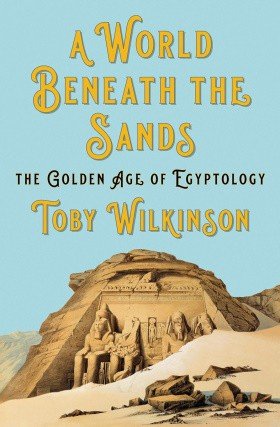5. A seated statue of King Khafra (akg-images / Fototeca Gilardi)
6. Lucie Duff Gordon (National Portrait Gallery, London, UK / Photo © Stefano Baldini / Bridgeman Images)
7. Flinders Petrie outside a rock-cut tomb (which served as his home) on the first of his many archaeological expeditions to Egypt (Courtesy of The Egypt Exploration Society)
8. Ernest Alfred Thompson Wallis Budge (© Trustees of the British Museum)
9. Theodore Davis, Arthur Weigall, Mrs Weigall and Edward Ayrton in the Valley of the Kings (MS 3196/360/25 reproduced with the permission of the Library of Birmingham)
10. Ludwig Borchardt (bpk / Vorderasiatisches Museum, SMB)
11. Howard Carter meeting his patron Lord Carnarvon and Lady Evelyn Herbert at Luxor (Bentley Archive / Popperfoto / Contributor)
12. Carter with King Fuad I and Egyptian officials in the Valley of the Kings (© Tallandier / Bridgeman Images)
Colour
1. Napoleon Bonaparte (GL Archive / Alamy Stock Photo)
2. Giovanni Battista Belzoni (Fitzwilliam Museum, University of Cambridge, UK / Bridgeman Images)
3. The ‘Young Memnon’: a stone bust of pharaoh Ramesses II (© Trustees of the British Museum)
4. Jean-François Champollion (Louvre, Paris, France / Photo © Luisa Ricciarini / Bridgeman Images)
5. The temple of the goddess Hathor at Dendera ( Juergen Ritterbach / Alamy Stock Photo)
6. A watercolour by David Roberts of the great temple at Abu Simbel (akg-images / Erich Lessing)
7. A wall decoration from one of the Tombs of the Nobles at Thebes (Francis Dzikowski / akg-images)
8. Muhammad Ali, the Albanian mercenary (Lebrecht Music & Arts / Alamy Stock Photo)
9. A statue of a seated scribe (Peter Horree / Alamy Stock Photo)
10. A relief of the queen of Punt (akg-images / Erich Lessing)
11. Mariette’s tomb in Cairo (akg-images / François Guénet)
12. Amelia Edwards (Hulton Archive / Stringer)
13. A painted mummy mask from Hawara (© Trustees of the British Museum)
14. The Hypostyle Hall at Karnak ( Juan Aunion / Alamy Stock Photo)
15. The Egyptian Museum, Cairo (eFesenko / Alamy Stock Photo)
16. The great temple at Abu Simbel (Angus McComiskey / Alamy Stock Photo)
17. King Menkaura flanked by two goddesses (Egyptian National Museum, Cairo, Egypt / Bridgeman Images)
18. The portable furniture made for Queen Hetepheres (Werner Forman / Contributor)
19. The gilded mask of Tjuyu from the Valley of the Kings (Egyptian National Museum, Cairo, Egypt / De Agostini Picture Library / S. Vannini / Bridgeman Images)
20. Evelyn Baring, Lord Cromer (Granger Historical Picture Archive / Alamy Stock Photo)
21. The mortuary temple of Hatshepsut (robertharding / Alamy Stock Photo)
22. The painted limestone bust of Nefertiti discovered in 1912 (Granger Historical Picture Archive / Alamy Stock Photo)
23. The golden mask of Tutankhamun (B.O’Kane / Alamy Stock Photo)




Introduction
On my approaching the temple, the hope I had formed of opening its entrance vanished at once; for the amazing accumulation of sand was such, that it appeared an impossibility ever to reach the door.1
GIOVANNI BATTISTA BELZONI, 1821
Rudyard Kipling wrote of archaeology that it ‘furnishes a scholarly pursuit with all the excitement of a gold prospector’s life’.2 If that is true of archaeology, it is all the more true of Egyptology. For what could be more exciting, more exotic or more intrepid than digging in the sands of Egypt in the hope of discovering golden treasures from the age of the pharaohs? The antiquities of the Nile Valley have a special allure, a particular romance, that have spoken to the Western imagination for centuries. Our fascination with ancient Egypt goes back to the ancient Greeks, while the practice of collecting Egyptian antiquities was already well known in ancient Rome. But the heyday of Egyptology – the period when it emerged from its antiquarian origins to develop as a proper scientific discipline, and the period that witnessed all the great discoveries, prompting recurrent bouts of ‘Egyptomania’ in the West – was undoubtedly the nineteenth and early twentieth centuries. This golden age of scholarship and adventure is neatly bookended by two epoch-making events: the decipherment of hieroglyphics in 1822, and the discovery of Tutankhamun’s tomb exactly a hundred years later. The first provided the key to unlocking the secrets of pharaonic civilization, and initiated a headlong rush to find out more, sparking intensive Western engagement with Egypt. The second revealed the full glory and sophistication of pharaonic civilization, and gave legitimacy to the Egyptians’ desire for self-determination, sounding the death knell for Western dominance in the country’s affairs.





















